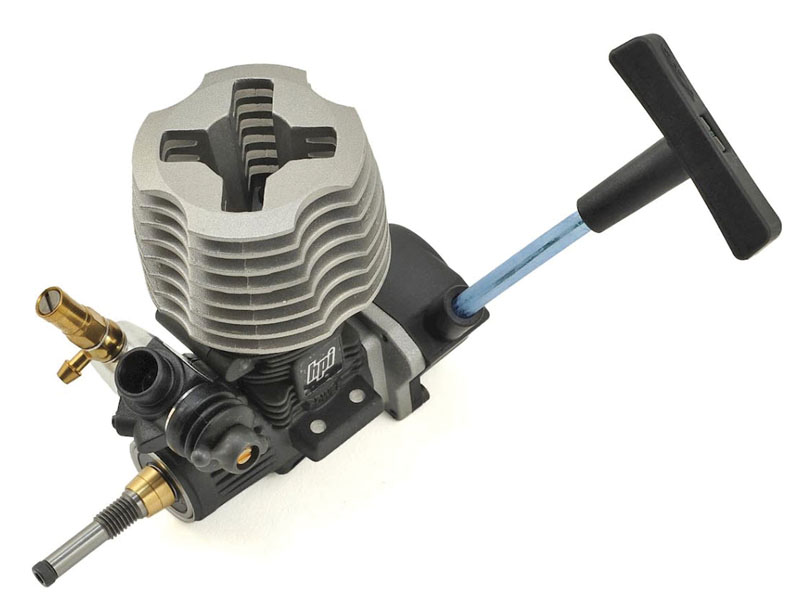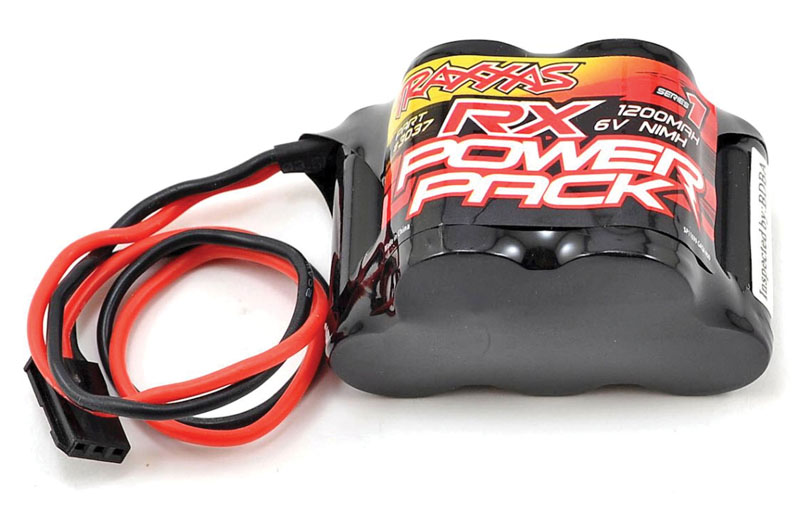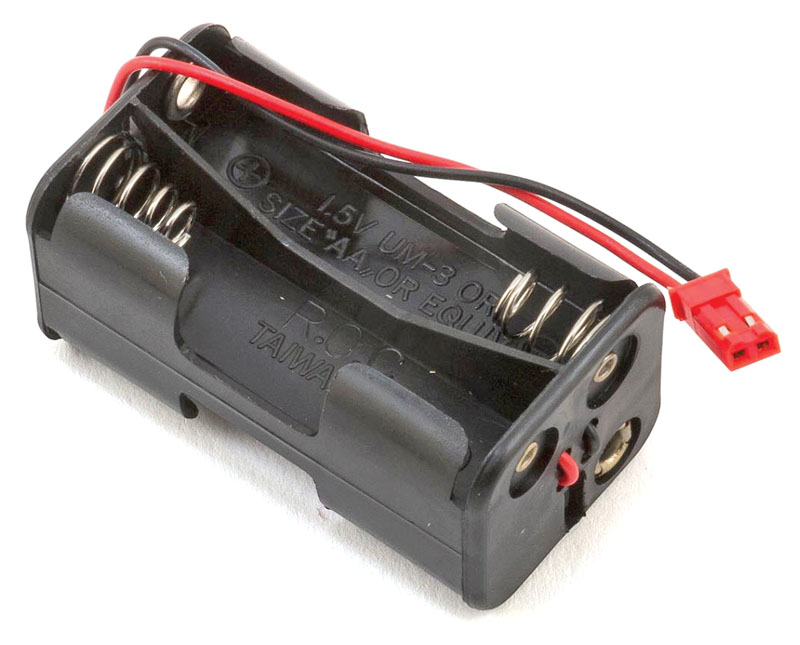RC cars and trucks look more realistic than ever, but until we’re all driving electric full-scale cars, battery-powered models are still highly unrealistic in the way they’re powered. For a truly realistic RC experience (in terms of technology instead of looks), nothing beats driving an RC machine with a real piston-pounding, fuel-burning engine under the body. Here’s how to get going with nitro power.
|
Tools You’ll Need for nitro Most of the tools that are used for electric vehicles will work for nitro-powered vehicles, but there are a few nitro-specific tools that you should pick up if you get serious about nitro power.8mm nut driver. You’ll need an 8mm nut driver for the glow plug, and a T-handle wrench is best for this job because it will get you the leverage that you need to loosen and tighten the plug. If you can find one that has a spring or rubber insert that will hold onto the glow plug, that’s even better.10mm nut driver. A 10mm nut driver is used to install and remove the flywheel nut. You may not think that you’ll ever have to do that, but it’s one of those things that you will need when you least expect it and will be bummed if you don’t have it. Sometimes you can find a 10mm nut driver with an 8mm nut driver on the same tool. Flywheel wrench. A flywheel wrench has slots in it, and they align with the pins found on the engine’s flywheel. This allows you to firmly hold onto the flywheel while loosening or tightening the flywheel nut. Piston locking tool. A piston locking tool can be used in place of a flywheel wrench to tighten or loosen the flywheel nut. Once in place, the piston makes contact with the stop, and that keeps the crankshaft—and, therefore, your flywheel—from moving. Flat-blade screwdriver. A small flat-blade-type screwdriver is needed to make adjustments to the needles on your engine’s carburetor. Temperature gauge. A temp gauge is a great tool for checking the temperature of your engine and getting the tune of the carb just right. |
THEY RUN ON NITRO, NOT GAS
Nitro-powered cars are often referred to as “gas” cars, but they don’t use gasoline to make them run; they, instead, use nitro fuel, which has a blend of ingredients that affects the engine’s power, performance, and life. Every container of nitro car fuel has the same basic set of components; the proportions of each compound varies from manufacturer to manufacturer and within a company’s product line depending on application, but you can always count on methanol, nitromethane, and lubricants being on the list. Performance is based on how much nitromethane is in the fuel, and that can range from as little as 15 percent to as high as 55 percent. Thirty percent and lower is generally used for basher-type vehicles, while higher than 30 percent is used for racing. The more nitromethane in the fuel, the faster your car will go—basically like using a higher-voltage battery in an electric car. Using 20 percent fuel, for example, is like running a 2S battery, while 30 percent would be like bumping up to a 3S pack.

Nitro fuel is a blend of methanol, nitromethane. and lubricants. The power output of this fuel depends on the percentage of nitromethane in the blend.
WHAT TO DO IF YOUR ENGINE WON’T START
An engine needs three things to run: fuel, air, and a source of ignition. If the engine won’t even act like it’s trying to start, you’re probably missing one of those three components. Unless you’re on the moon, we feel safe checking off the “air” box. How about fuel? You would not be the first person in the world to get excited about firing up a new nitro car and forget to put fuel in the tank. Even if there is fuel in the tank, it has to reach the engine in order for the engine to run. Look at the fuel line—is it filled all the way to the carburetor? If not, prime the engine by plugging the exhaust with your fingertip while you pull the starter (or activate the electric starter). Unplug the exhaust when the fuel reaches the carb and the engine should start.
Still no go? Make sure you have the ignition piece of the puzzle. Is your glow starter fully charged? Is the plug wire for the electric starter properly installed? If yes, remove the glow plug and insert it into the glow starter to confirm it glows brightly. If it glows faintly or not at all, it’s no good—replace the plug. To test the plug in an electric-start engine, remove the plug, install the plug wire, and hold the plug against the engine to complete the circuit. Crank the engine to observe how well the plug heats.

Traxxas nitro models have diagnostic circuitry built into the starter unit to let you know if there’s a problem with the glow plug or starter motor.

If your glow igniter or starter battery is fully charged and the glow plug doesn’t glow bright orange, it’s time for a new plug.
TUNE IT EVERY TIME
“But I just had my engine tuned last week!” RC engines aren’t like the engines in a car or lawn mower, which “stay tuned” after you get them running right. Nitro engines are sensitive to temperature, humidity, and barometric pressure. For peak performance, you need to tune your car’s engine each time you run it. You shouldn’t need to make major changes from day to day, but slight adjustments will make noticeable improvements to speed and power. Consult your manual (or check out “How to Tune a Nitro Engine” in our November 2017 issue) for full tuning instructions.

The high-speed and low-speed needles are used to fine-tune the mixture of air and fuel for maximum performance.
STOPPING AN ENGINE
There are three different ways you can stop an engine if you’re done running before the tank is empty.
Stub the Flywheel
The first and safest way to stop the engine is to bump the flywheel; this should be done when the engine is at idle, when it’s making the least torque. A piece of plastic, such as the end of a screwdriver handle, is the best tool to use for this job because it won’t damage the engine’s flywheel but does a good job of grabbing onto the flywheel; a piece of wood is the next best thing.
Pinch the Fuel Line
With some vehicles, there’s no access to the flywheel; in that case, you can use one of the two other ways. Pinching the fuel line is a way to shut off an engine. This keeps fuel from flowing into the carb, and once the fuel in the line after the pinch point is burned off, the engine will die. Some may argue that this is not the way to shut down your engine because it leans it out and, therefore, can cause damage. Yes, this will lean the engine out, but that lean condition happens for only a short time, and because it’s at idle, there won’t be much head buildup, so no damage is likely to occur. Running the tank dry, which happens often, can actually be more damaging than pinching the line.
Plug the Exhaust
The last way to stop an engine is by plugging the exhaust, and it should be done with a rubber or plastic stopper. Although it will shut the engine down, plugging the exhaust will pressurize the tank and that will force extra fuel into the carb and flood the engine, which could make it difficult to start your engine the next time.
GLOW, NOT SPARK
Engines that run on gas use a spark-ignition system to ignite the fuel at a precise point as the piston moves up and down in the cylinder. Nitro engines do not have a spark plug and, instead, operate similar to a diesel engine. A glow plug is used to ignite the fuel, and a glow starter is used to heat that plug when firing the engine for the first time. Once the engine fires and builds up heat, the compression in the combustion chamber (along with the glow plug) ignites the fuel, and that explosion helps keep the glow plug hot and ready for the next cycle. A glow starter uses a single battery cell to do the job, and you can get one with a rechargeable battery or a setup for an alkaline battery that you can buy at the store. Some ready-to-run (RTR) vehicles come with a glow starter to get you up and running, and electric starters, like the EZ-Start from Traxxas, have a glow igniter built into the system.

A glow starter is used to heat up the glow plug when you start your engine. Once the engine is running, combustion heat keeps the plug hot.
TYPES OF STARTERS
There are three different ways RTR nitro cars and trucks are started, and each has its advantages and disadvantages. Here’s what you’ll find when you’re shopping:
Pull Starter
You’ve pull-started a lawn mower or weed whacker, right? Same thing. Pulling on the starter handle cranks the engine to life, as long as the glow plug is glowing. Pull starters are effective and inexpensive, but generally aren’t very durable. And if your engine doesn’t want to start, tugging and tugging on the starter cord gets tiresome. More popular and common are electric-start systems—which we’ll cover next.
Shaft Starter
Instead of pulling a string to crank the engine, a shaft starter uses a handheld, motorized starter to crank the engine via a shaft inserted in the back of the engine. As with a pull starter, you still need a glow igniter to heat the glow plug. A shaft starter is much easier on the wrist than a pull starter, but the starter unit and the battery it requires adds to your getting-started cost.
Onboard Electric Starting
Just like a full-size car, an onboard electric starter uses a gearbox and electric motor attached to the engine to crank it to life, and power for the glow plug is also incorporated. Unlike a full-size car, the starter battery does not stay with the car; it detaches once the engine is running. The downside? The onboard starter components add weight, but you won’t notice or care. And it’s totally worth the convenience. If you’re shopping Traxxas models, you’ll find all the nitro rigs have electric starting.
DON’T FORGET THE BATTERIES
Battery power isn’t used to run the engine in a nitro-powered vehicle, but the vehicle still needs battery power to run the servos and receiver. Nitro vehicles use a receiver pack, which may be a simple holder designed to accept four AA batteries, or a rechargeable battery assembled with NiMH or LiPo cells. If your vehicle comes with a 4-cell holder, it’s a good idea to wrap it once or twice around with electrical tape to make sure the batteries don’t pop out when the vehicle takes a big hit. If you upgrade to a rechargeable pack, make sure you have an appropriate charger—especially if you get a LiPo battery, which must be charged with a LiPo-specific charger.
|
Be Considerate Part of what makes a nitro-powered vehicle attractive is that you hear the sound of an engine and smell the smoke coming out of the exhaust, which make for a more realistic experience. Not everyone feels the same way, so you’ll want to be considerate of the people around you when driving your nitro-powered vehicle. Don’t run your vehicles too early or too late in the day, don’t run for extended periods of time, and stay away from gatherings. |
Text & Photos by Kevin Hetmanski
The post Complete Nitro Power Get-Started Guide appeared first on RC Car Action.








